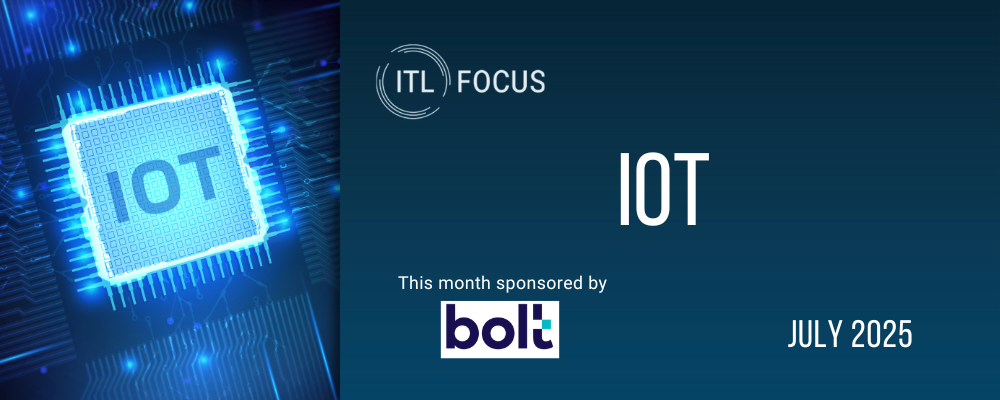Spies and “bugs” have made frequent appearances in movies, books and television. In the James Bond movie series, we see an array of devices that were designed for 007 by “Q.” In the 1997 movie,
Tomorrow Never Dies, Bond’s BMW car and mobile phone provide the first glimpses of the potential of the Internet of Things (IoT). He remotely starts and drives the vehicle to escape the villains, while operating a number of built-in devices from the phone as the car views and senses issues. Q was always on the leading edge of new technology for Bond.
Fast forward 20 years, and we now have sensors and capabilities in so many things … in our appliances, automobiles, mobile phones and a host of common wearables. You may not think of these as "bugs," but they are. They are mini- and micro-technology components employed to see, listen, learn, assess and respond. The only difference between today’s sensors and yesterday’s is that today’s sensors are infinitely better at reading and recording data — and they may be used for the common good.
To prove that they are still considered “bugs,” however, you only need to look at a bill introduced recently by U.S. Sens. Mark Warner (VA) and Cory Gardner (CO). The Internet of Things Cyber Security Improvement Act is aimed to protect the federal government from cyber intrusion through the Internet of Things. Their bill raises a great point — sensors need built-in security measures that will allow for the good features to be used without introducing new risks.
See also: Insurance and the Internet of Things
Good Bugs Eat Risk
In the insurance industry, we understand the implications of sensors and their ability to lower risk. “Bugs” and sensors are now our best friends. In our
Future Trends 2017: The Shift Gains Momentum report, we examined how IoT experimentation and implementation is reaching into every area of insurance. Here is a short list of innovative ideas introduced by early adopters of IoT in insurance:
- Progressive, via the Snapshot usage-based-insurance telematics offering, monitored how customers drove using an OBD plug-in device from Zubie.
- Liberty Mutual partnered with Google to use NEST connected smoke alarms in the home to help customers reduce fire risk and carbon monoxide poisoning while also reducing their homeowners insurance premium.
- Beam Dental began pricing dental insurance based on smart toothbrush usage data.
- John Hancock used wearable devices to track the well-being of customers, lowering life insurance premiums and offering an incentive program through Vitality to shop for an array of things.
- Oscar, a health insurance startup, used wearable fitness trackers and a mobile app to help track and encourage members to be fit, find doctors, access health history, access the doctor on call and connect to Apple Health.
In addition to the last two examples above, companies are using wearable devices and the data generated from them to better assess individuals for healthcare, life insurance, workers compensation and investment rewards based on their activity and lifestyle. Innovative insurers are using wearables to provide improved underwriting discounts, rewards, claims monitoring and new services using real-time data. The new services can include advice on healthy living, real-time healthcare and prevention, real-time monitoring and assistance in treatment or recovery plans and determining return to work timeframes for injuries or other health-related incidents. These all contribute to enhanced customer experiences, longer customer lives and improved insurer investment options.
There’s No Limit to Sensor Growth
This rapid experimentation and use of IoT isn’t just limited to wearables, telematics and smoke detectors. Sensors of all kinds are being born into healthcare environments, construction sites, commercial buildings, roads and bridges, homes and cars.
- By 2025, the Internet of Things will be worth trillions annually.
- Connected homes will grow rapidly by 30% per year in the U.S. alone, where 22% of households now have at least one connected device.
- The wearable device market is expected to more than double over the next five years.
Sensors Should Reduce Claims
With the proliferation of companies innovating and taking new offerings to market using IoT, we are seeing the beginning of a huge boom in insurers using IoT to drive an engaging customer experience through personalized insurance offerings, reduced costs and new value-added services. The Boston Consulting Group estimated that U.S. insurers could reduce annual claims by 40% to 60% with real-time IoT. The key is that insurers will be able to move from paying claims to mitigating or eliminating risk by engaging with customers via IoT devices while also enhancing the customer experience.
What’s Next for the IoT? Better bugs?
Though so much remains uncertain and untested, we should expect to see a rapid evolution of technologies to sort out which sensors are most valuable in which locations and just how IoT can bring cost-effective monitoring to market.
For example, P&C insurers were quick to pick up on OBD technology, with installed devices in vehicles. In many cases, mobile phone monitoring soon became a more cost-effective solution. Most smart phones have GPS capability and an accelerometer. And now automotive manufacturers are embedding sensors and telematics in vehicles to enhance safety and position themselves toward autonomous driving vehicles – just like Bond.
As some wearable technologies are dropping out of the running, life and health insurers will soon be taking advantage of advancements in smart watch design. The first wave of wearables looked like digital tech devices with touchscreens and LED displays. The next wave is the introduction of smart tech into “normal”-looking watches from standard manufacturers like Movado, Tag Heuer, Fossil and Tommy Hilfiger. Android Wear technology will be feeding the data. These would be much more like Q would have designed, and they will undoubtedly be worn by many who wouldn’t normally use an Apple Watch or a FitBit.
A similar technology wave is beginning to hit homes. Currently, sensors are in use in some thermostats, appliances, lighting systems, security systems, computer and gaming devices. But one of the drawbacks to having so many sensors is that most companies haven’t networked all of them to a single IoT data framework. This hinders the ability to aggregate the data across sensors, limiting the potential value. Every new data point requires a new type of sensor. As with OBD devices, attaching a sensor to everything may even become non-essential, in favor of one centrally located device with multiple sensors.
PhD students at Carnegie Mellon University have been developing a plug-in sensor package they call a “Synthetic Sensor.” Plug it into an outlet, and that room is immediately a smart room. Instead of a smart sensor on every item in the room, multiple sensors in the device track many items, people and safety concerns at once. The device can detect if anything seems to be “wrong” when appliances are in use by analyzing machine vibrations. And, of course, it can track usage patterns. The sensor can even track things insurers may not need to know, like how many paper towels are still left on a roll.
See also: How the ‘Internet of Things’ Affects Strategic Planning
So, would P&C insurers like to be connected to the water heater thermometer, or have access to a device that can hear pops and leaks? Would L&A insurers like to know the lifestyle and behaviors of their customers to encourage healthy living? Much of this will be sorted out in the coming years.
What doesn’t need to be sorted out is that insurers will want access to device data – and they will pay for it. They will need to be running systems that will readily hold the data, analyze it and use it effectively. Cloud storage of device data and even cloud analytics will play a tremendous role in giving value to IoT data streams.
IoT advancements are exciting! They hold promise for insurers, and they certainly will make many of our environments safer and smarter.








